Riga is well known for its wonderful collection of art nouveau treasures, but less well known are its modernist buildings from the 1930's that are scattered throughout the city. On my recent visit to Riga, I was lucky enough to be able to have a close look at a number of the city's modernist gems and to make a photographic record of them.
1940 saw the end of Latvia's first short period of independence and the first of three occupations - the Soviets, the Germans and then the Soviets again. The Soviets stayed until 1991. Latvia had gained its independence in 1918 following the collapse of the Tsarist Russian empire. During those 21 years of freedom, like many countries in eastern and central Europe, there was an explosion of creative activity with artists, architects, musicians and writers all making contributions to this artistic flowering.
There is still a built legacy from the 1930's, some of it in exceptionally good condition, especially the buildings in the centre of the city. One of my favourites is located on the busy Valnu Street at number 11, (pictured below) just a short walk from the main Dom square. It was built in 1930-31 by the German architects, Alfred Karr and Kurt Betge, with the Bank of Latvia taking up residence in 1931. This excellent example of functionalist architecture underwent partial reconstruction in 1996 but luckily many original features and decorative elements were retained. I love the colours, the clean lines and the feeling that it looks so good it could have been built yesterday! It also reminds me a little of my beloved Ibex House in London.
Another great building by these architects is the Office of the Trade Union for Publishers at Lacplesa Street 43-45, built in 1930 (pictured below). The Trade Union commissioned a whole complex of facilities including offices, shops and apartments in this six storey masonry building. The shops and communal spaces occupy the two lower floors with apartments above. There is a through drive way at ground floor level. As with some of the other 1930's buildings in Riga, I was reminded of the Marcel Janco apartments I saw in Bucharest last year, whilst those winged balconies on the apartment levels of the block would not be out of place in Tel Aviv. Karr and Betge did not win the original commission for this building - it went to another German, Dresden based firm but their practice was the most successful in promoting the modern movement in Latvia during the 1920's and 1930's and they eventually saw the project to completion.
I came upon a number of modernist buildings by chance. However, I had to make a concerted effort to visit two particularly interesting examples of this style as they are located a good twenty minutes drive from the centre of Riga in an extremely run down and visibly poor part of the city. I decided to hire a taxi to make best use of my time and soon realised that there was no way I could have found these buildings using public transport. The driver was happy to wait whilst I had a good look and must have done this before, but the locals stared uncomprehendingly at the odd foreigner taking pictures of old and in some cases decaying buildings. The most interesting response came from an elderly woman who cranked open the door of the Institute of Organics to shriek at me (in Russian?) that photography was not allowed. I smiled and said I was English which provoked a twisted facial expression, not unlike tha of someone struggling with indigestion, a sound that went something like "ugh" and a banging of the door in disgust as she went back in.
Back to the buildings. The architect for the 1930's villa at Laimdotas 30, pictured below, was one E. Betkher. It reminds me very strongly of Janco's work in Bucharest and again has more than a passing resemblance to some of Tel Aviv's Bauhaus treasures due to its curves, balconies and the decorative porthole window on the upper floor which contributes to its somewhat nautical appearance. I am not sure when the surrounding houses were built but if they came afterwards, I suspect that the residents of Laimdotas 30 would not have been impressed.
A short drive away is another structure with a distinctly Bauhaus look. In much better shape than its near neighbour at Laimdotas. Zamgalu Street 1(pictured below) has clearly been renovated and seriously cleaned. The driver explained to me that this former private home is now used as a wedding venue. It stands out from the drab housing surrounding it both because of its design and its brightness. It was built in 1936, the work of architect N. Makedonskis.
Heading back to the centre of the city, there are many more modernist survivors, including two I found quite by chance in Gertrudes Street. This is a typical Riga street where it is possible to find rationalist architecture from the 1930's next door to ornate art nouveau structures, just 25 years older. This not only demonstrates how quickly styles and tastes change and develop but also shows the richness of Riga's built heritage. Number 20 (pictured below) began life as a tenement building but today is home to a spa on the ground floor. It has a number of features found in the streamline version of modernism with accentuated windows, corner curves, horizontal rows of windows and small balconies. The exterior would benefit from a good clean but this is a building that could have graced any European capital in the 1930's and as a tenement block it must have been pretty high class.
Just across the road at number 27 is another tenement block. Adjacent to a beautiful art nouveau palace currently undergoing restoration, this is an extremely striking building, due primarily to the accentuated triangular shaped windows at all levels above ground floor. I had great fun playing with the angles of this building and taking pictures from beneath the protruding windows. Built in 1934 and designed by architect Teodors Hermanovskis, I am advised that this use of geometric heavily cubist shapes, was typical of his work (detail pictured below). This six storey block with granite plastering makes clever use of design details to give an impression of high quality design. As with many buildings from the 1930's commercial use was made of the ground floor, which still has a cafe. Interestingly, Hermanovskis was also a leading Latvian politician during the brief first period of independence, whilst his son later became an architect in the United States.
Finally, a little touch of Miami! The Daile restaurant and cinema (pictured below) is another Hermanovskis building, dating from 1936 and located at Barona 31, just a short walk from my hotel and one of Riga's busiest thoroughfares. It is closer to art deco than the other buildings considered here and has contrasting arrangements of vertical and horizontal elements. There is still a cinema and a cafe as well as numerous shops inside this large complex. It is not difficult to imagine Riga's citizens dressing up in 1936 to attend the grand opening. Riga was desperately cold during my stay, but this building brings a touch of sunshine to the Latvian winter!
I must note my thanks to Ilza Martinsone of the Latvian Museum of Architecture for her help in providing some of the details for this posting as well as to Gali-Dana for helping find out more about Valnu 11. Thanks very much!
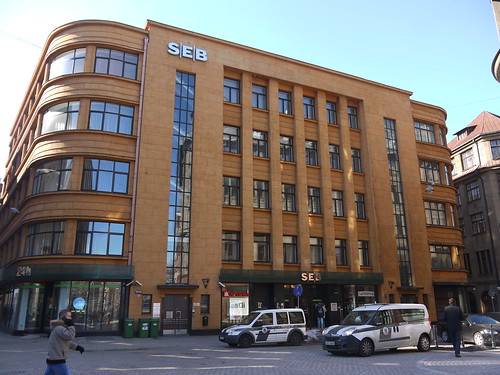
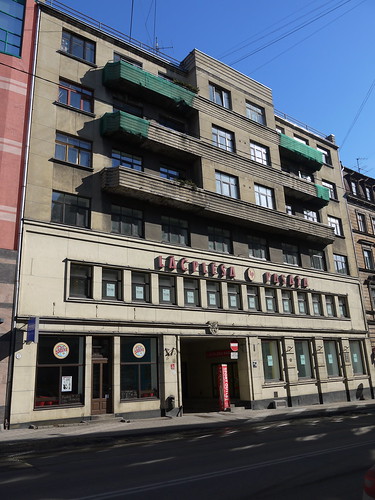
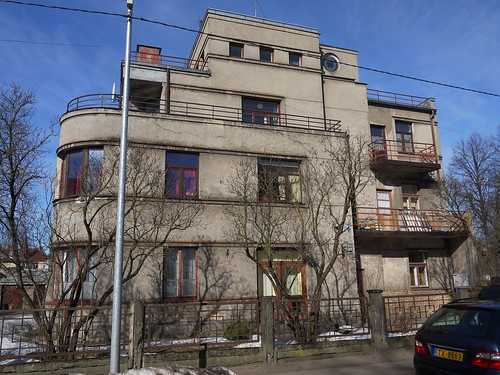
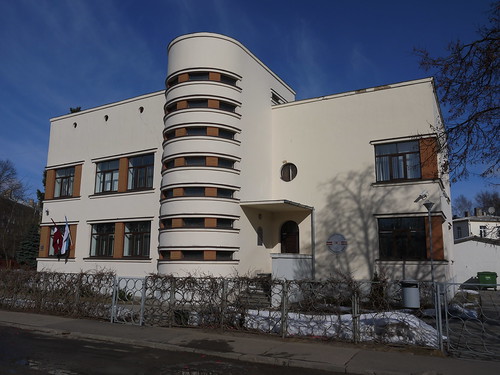
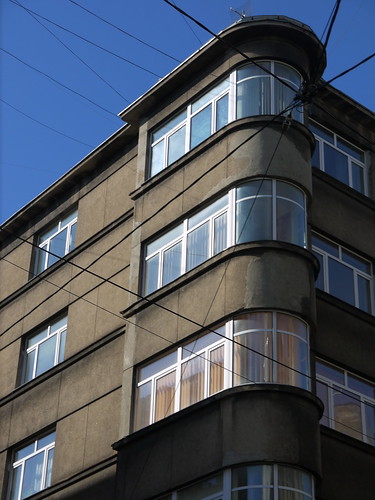
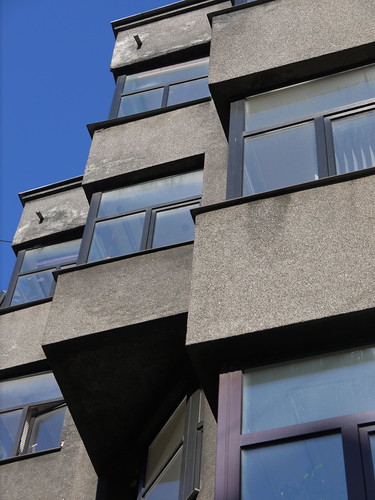

Thanks a lot for paying attention to my favorite style of Riga's buildings
ReplyDeleteThanks Ivo. You might be interested in this set of modernist photos on my flickr account.
ReplyDeletehttp://www.flickr.com/photos/yekkes/sets/72157633014947405/
Adriaan, thanks for the good blog! I'm a foreign architect living in Riga, and some of the buildings were unknown to me, work to be done :)
ReplyDeleteThank you. I like Riga very much - it must be interesting to work there. You can see more pictures of Riga's architecture at http://www.flickr.com/photos/yekkes/sets/72157632998066388/
DeleteAdriaan, thanks for the good blog! Good Information and well researched... more amazing! Have a nice day :)
ReplyDeleteBucharest is a Capital of Romania. It is very famous for its art, architecture, and culture. Recently I visited this city and capture the images and memories here. me and my friends decided going to explore and celebrate the christmas bus tours. We are very excited and happy to explore.
ReplyDelete